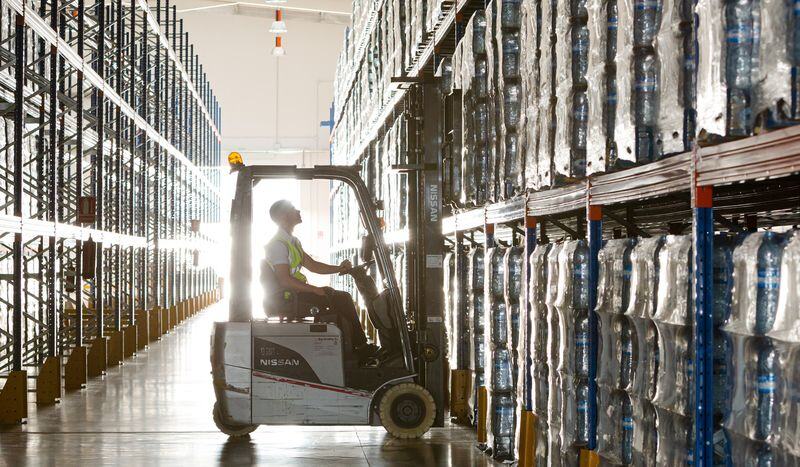Flexibility vs Agility in Supply Chain Operations
Flexibility and agility are two words that are often used interchangeably, but there are important distinctions between them. Knowing the difference can guide how and when you focus your time and energy to strengthen your business.
In this article we will clarify what flexibility and agility mean by giving examples of how you can impact your operation’s ability to exercise both. By the end, you will know how flexibility and agility are related, who owns them, and what they mean for your business.
Flexibility in Operations Definition
Flexibility is an operational ability at the tactical level. It may be better explained as the ability to perform a predetermined action in a manner that adapts to predictable changes.
Most operational leaders would argue that manufacturing and logistics environments are anything but predictable. The key here is to take a step back and look at flexibility in a couple of different categories: product, mix, volume, and delivery.
Product flexibility is your ability to introduce new products or make changes to your current product. Key considerations here are your engineering and programming teams, new equipment capabilities, customer qualifications, and skilled labor to design or figure out new processes.
Mix flexibility is determined by how your operations can change the relative proportions of product types within an aggregate output level of volume. Key considerations to look at are equipment and skill bottlenecks, order visibility, change over considerations, and raw material inventory levels.
Volume flexibility is determined by how an operation can change what those aggregate output levels are. Volume is usually capped by equipment capacity but labor capacity plays a larger role in how you scale the volume up or down within those confines. Volume and labor are two of the largest levers in an operations financial performance and should be well understood. Key considerations are equipment capacity, labor capacity, skill flexibility, order volatility, absorption, and fixed and variable costs.
Delivery flexibility is the ability to change planned delivery dates. Although customer needs dictate what due dates are, the speed with which a business can produce that product within that window can create additional flexibility for their operation. This can enable businesses to reduce lead time to become more competitive, optimize production schedules, or take expedited orders at a premium. Key considerations are competitive lead time, product cycle time, production scheduling, and real time unconstrained work center load.
As you look at those different flexibility buckets, take time to consider a few more things. First, what is the range of your flexibility. In a job shop, mix flexibility is going to be critical to their operation. If they are focused on growing their business, product flexibility will be important to introduce new products and capabilities to bring in those programs. The second thing to consider is how quickly you can respond to those changes. For instance, if competitive lead times are one week, you must quickly identify that change and adapt to fully capture that opportunity.
Logistics and manufacturing environments are volatile. How well we understand our environments, how fast we can respond, and how much we can scale (up or down) can dramatically increase the level of flexibility of our operations. Since flexibility is an operational ability, that means it can be learned, understood, practiced, and improved upon. This gives your business a distinct advantage in your market, but it is up to the Operations leader to make flexibility a priority.
If you’re familiar with Veryable, then you know how our on-demand labor platform enables operational flexibility by scaling labor capacity up and down in real time. Veryable has taken this concept further by with the release of our new Workforce Management Tool, which offers a transformative solution that optimizes the labor planning process, replacing manual Excel spreadsheet planning with a streamlined, demand-driven approach. This helps to maximize productivity across your entire workforce, resulting in improved efficiency, better resource allocation, and significant cost savings for your company.
Agility in Operations Definition
Agility is the strategic capability to respond to unpredictable changes. External factors or fundamental changes in your organization which are outside the bounds of what’s considered normal can necessitate agility. You might have heard this described as a “pivot” like in basketball, where players literally think on their feet to change the play to make it work.
Let’s break this explanation down a bit further. If agility is considered a strategic capability, it implies that the leadership of the organization is charged with understanding the external signals and environment the business operates with. Noticing this unpredicted change, the leadership would need to take decisive action to reorient the company.
Leaders can exercise agility by leveraging a culture built on innovation, experimentation, and proven operational excellence. These things would be necessary to keep technology, operations, and strategy aligned throughout this reorientation.
A mindset centered on Lean and the rigor of continuous improvement are required to stabilize and refine processes in order to have sustained success through agility.
Manufacturing and logistics companies rarely encounter such a rapid and unpredictable external force that would move them to completely redefine who they are or what they do. In most cases, this happens over time. The “before” and “after” of a pivot may be drastic, but the necessary changes happen in smaller increments. The smaller the increment of change, the closer that change lies on the predictable side of the spectrum. With this reasoning, flexibility enables agility. You can be flexible without being agile, but you cannot be agile if there is no flexibility in your business processes.
How Flexibility and Agility Can Grow Your Business

Flexibility and agility are different concepts, but both enable your business to develop a competitive advantage. Rapidly changing customer expectations and demand variation will only continue to make it more and more challenging for manufacturers and distributors.
Next generation manufacturing is about both flexibility and agility. Manufacturers will need to deliver mass customization close to the customer. This in turn changes how we move the product that we make. We are in the throes of this (unpredicted) change. Although this change is taking place now, it is happening in small increments. While these next steps are being developed in real time and changing how we get there, the future of manufacturing will be built on four principles:
- Localized – Base components will be made and shipped to decentralized locations where products are assembled to customers’ exact specifications in real time.
- Customer Centric – Regional or functional variances in components are produced and stored locally for immediate assembly, enabling mass customization.
- Asset Light – Custom components are manufactured according to demand with 3D printing or sourced via virtual marketplaces.
- Real-Time Agility – Labor capacity fluctuates in real-time according to demand variation, ensuring customer expectations are met in terms of quality, customization, and immediacy while eliminating unnecessary costs.
Those who embrace the direction these industries are going will step up to the plate and understand the critical importance of operational flexibility. As they improve their flexibility, not only will they set themselves apart, but they will create the culture that makes their business more agile. The combination of flexibility and agility is the foundation upon which you can build a vision for your company’s future.
The most actionable advice we can give for building flexibility quickly is to use on-demand labor to create flexible labor capacity. This is a key enabler of operational agility aligned with Lean thinking. Read more about on-demand labor to see what makes this approach so powerful.
Previous Posts
Trump 2.0 Week 13 Recap: Discussing Ongoing Negotiations With Key Trade Partners, A Potential Deal With China On The Horizon, and More
The Future of Manufacturing and Logistics
Create a free business profile today to explore our platform.






